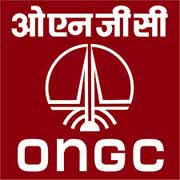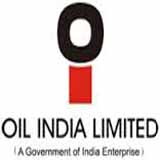-
Transformational Achievements in Power, Coal, New & Renewable Energy and Mines
Coal
Coal sector is being transformed from “no coal to more coal to better coal.”
Coal production growth is double of UPA production – Total coal production increased to 554 MT in 2016-17 from 462 MT in 2013-14. This increase of 92 MT was achieved by UPA in 7 years. Coal quality is the next frontier after achieving adequate coal for all power plants. Aggressive targets for coal production reduced shortage of coal due to which, CIL had to recalibrate its production and focus on quality. A sense of security was provided to the industry that coal was available sufficiently leading to better inventory management at the consumer end.
Efficiency improvements are being conducted at both the coal end and power plants leading to savings for the entire sector thereby benefiting consumers. There has been a reduction in coal consumption while simultaneously matching the quality of imported coal. Coal required to generate per unit of electricity (specific coal consumption) has reduced by 8% in last 3 years. NTPC alone has reduced its specific coal consumption by 5.5% in 2016-17. This is despite reduction of Rs. 23,349 crores in imported coal which is nearly 30% higher in quality than domestic coal and thus is required in lower volumes.
Some of the measures that have made this possible include Import Coal Substitution, Coal Linkage Rationalisation, Coal Swapping between less efficient and more efficient units, 3rd Party Sampling, coal washing and Correction of Grade Slippage through re-gradation of Mines.
All these steps are being taken to ensure reliable and quality supply of coal to provide affordable and efficient energy to the people of India.
Power
India’s first power plant was setup in 1897 in Darjeeling. Since then 214 GW of capacity was added till Mar 14 and in just 3 years since then, Conventional capacity has increased by one-fourth i.e. 56 GW since March 2014. This includes Hydro, Thermal and Nuclear..
Robust power generation growth: Power generation growth for conventional is 4.7% for 2016-17 (provisional) and for renewable is 24.6% for 2016-17 (provisional). Therefore, the total power generation growth including renewables is 5.8% for 2016-17 (provisional). Power generation growth including renewables is 6.4% from 2014-2017 versus 6.15% from 2004-14. Generation growth would have increased further but for DSM (Demand Side Management – Energy Efficiency) activities. In 2014-16, growth was 6.9% & if the generation avoided due to DSM is added it was 9.5%.
The transmission sector saw a massive growth leading to one nation, one price and one grid. There has been 36% (One third) increase in transmission capacity from Mar 14 to Mar 17. There has been 26% (One fourth) increase in transmission lines from Mar 14 to Mar 17. Alternate Transmission Capacity to South India has increased by 87% from Mar 14 to Mar 17.
The drive to connect unelectrified villages achieved a new milestone of 13,123 villages of 18,452 electrified and by May 2018, electrification of all villages will transform lives of rural people.
UDAY (Ujwal DISCOM Assurance Yojana) seeks to turn around DISCOMs, and a total of 27 States and UTs have joined. Almost 85% UDAY Bonds have already been issued (Rs. 2.32 lakh cr out of total Rs. 2.72 lakh cr).
Energy efficiency movement under UJALA saw rapid growth with total 53 cr LED bulbs distributed of target 77 cr. The Government has distributed 22.6 cr and private companies have distributed 30.6 cr LED bulbs.
New and Renewable Energy
There has been a one third (32%) increase in grid-connected renewable capacity to 56.6 GW in Mar 17 (provisional) from 43 GW in
Mar 16. There has been a 78% increase in overall renewable energy installed from 32 GW in Mar 14 to 56.6 GW in Mar 17 (provisional). There has been an almost a 1/3rd increase in Renewable Energy Generation from 2014-15 to 2016-17 (provisional).
In 2016-17, the highest ever wind capacity of 5.5 GW was added. India has now over-taken Spain and reached the 4th position after China, USA and Germany. This sector has been moved from FIT regime to Competitive framework leading to record low tariffs of 3.46 per unit
In 2016-17, 6.8 GW solar capacity was added. Through competitive bidding, record Solar tariff of Rs. 2.97 / kWh was achieved. About 10 lakh solar lamps for students have been distributed and this has been upscaled to cover 70 lakh more students. From about 11,000 Solar Pumps installed in Mar 2014, solar pumps have crossed 1 lakh mark.
The framework agreement of International Solar Alliance was signed by 25 nations showcasing India’s leadership in the solar sector.
Mines
Transparent auctions of 21 mineral blocks till January will lead to total estimated revenue of Rs. 73,359 cr to State Governments over the lease periods.
The District Mineral Foundations constituted under Pradhan Mantri Khanij Kshetra Kalyan Yojana (PMKKY) for taking care of people and areas affected by mining activities have seen progress with 11 out of 12 mineral rich States framing rules for DMFs and setting them up in 287 districts.
Exploration is being given a fillip by taking up the Aero-geophysical survey of the country in a mission mode.
Mining Surveillance System by Indian Bureau of Mines will lead to greater transparency and accountability. TAMRA (Transparency, Auction Monitoring and Resource Augmentation) to provide the status of mining block auctioned will reduce opaqueness in the auction process. Star rating of major minerals has been launched to further sustainability in the mines.
NALCO saw its higher ever performance showing a robust economy. In 2016-17, highest ever Bauxite production of 6.825 mt (100% capacity) – 7.6% growth over last year. Highest ever Alumina Hydrate production of 2.1 mt (100% normative capacity) since inception achieved – 7.5% growth over last year Darren Woodson Womens Jersey
Share This



























































































